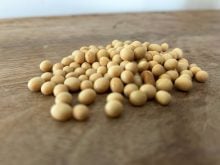Manitoba cattle producers lacking winter feed are getting help from Winnipeg and Ottawa.
The provincial and federal governments announced a forage assistance program today that subsidizes the cost of transporting feed or animals and offers financial support for producers in certain regions who need cash to buy hay.
The Canada-Manitoba Forage Shortfall and Transportation Assistance program will provide:
• Sixteen cents per tonne per loaded kilometre for the transportation of forage and feed.
• Up to eight cents per head per loaded kilometre for the transport of breeding livestock and their unweaned calves to feed.
Read Also

Federal budget shows remaining disconnect between agriculture, policymakers, panelists say
Canada’s agriculture sector is still disconnected from policymakers in some ways, say panelists at a CAPI webinar
• Producers who farm around Lake Manitoba and Lake Winnipegosis are eligible for forage purchase assistance of $50 per tonne.
• The province said downstream flows from excess moisture in western Manitoba and eastern Saskatchewan flooded forage land around Lake Manitoba and Lake Winnipegosis. That flooding affected approximately 75,000 acres of hayland and winter feed production for about 330 farms.
Manitoba agriculture minister Ron Kostyshyn said the initiative would assist farmers who faced “unprecedented wet weather” this year.
“Producers told us what was needed to ensure the health and sustainability of their herd over the winter and this program is a comprehensive response,” Kostyshyn said. “I know this program has been long-awaited and premier Selinger and I are pleased we were able to confirm our ongoing support for producers affected by flooding and excess moisture, above and beyond the programs already in place.”
Dan Mazier, vice-president of Keystone Agricultural Producers, said the support is needed and welcome, but grain farmers in southwestern Manitoba are also in financial peril.
“The announcement contains assistance for livestock producers through an AgriRecovery program, but there is absolutely nothing for flooded crop producers,” Mazier said in a statement. “I toured the southwest region last summer and met crop producers who were anticipating they would be forced to leave the industry because of the ongoing wet cycle that has created devastation.”
Approximately 150 to 200 millimetres of rain fell on parts of southwestern Manitoba in late June, decimating crops in the region.
KAP said farmers have excess moisture insurance, but it isn’t functioning for many growers because a five percent deductible is added, cumulatively, every time a claim is made.
“Caught in the ongoing wet weather pattern, a farmer can reach a deductible of 30 percent as a result of repeat claims,” KAP said in a release.
In the past, AgriRecovery and other programs compensated producers who lost crop because of flooding. In 2011, for instance, overland flooding caused 2.9 million unseeded acres in Manitoba and grain farmers received $108 million from recovery programs.
Mazier said Manitoba crop producers have received no money from AgriRecovery programs this year.















